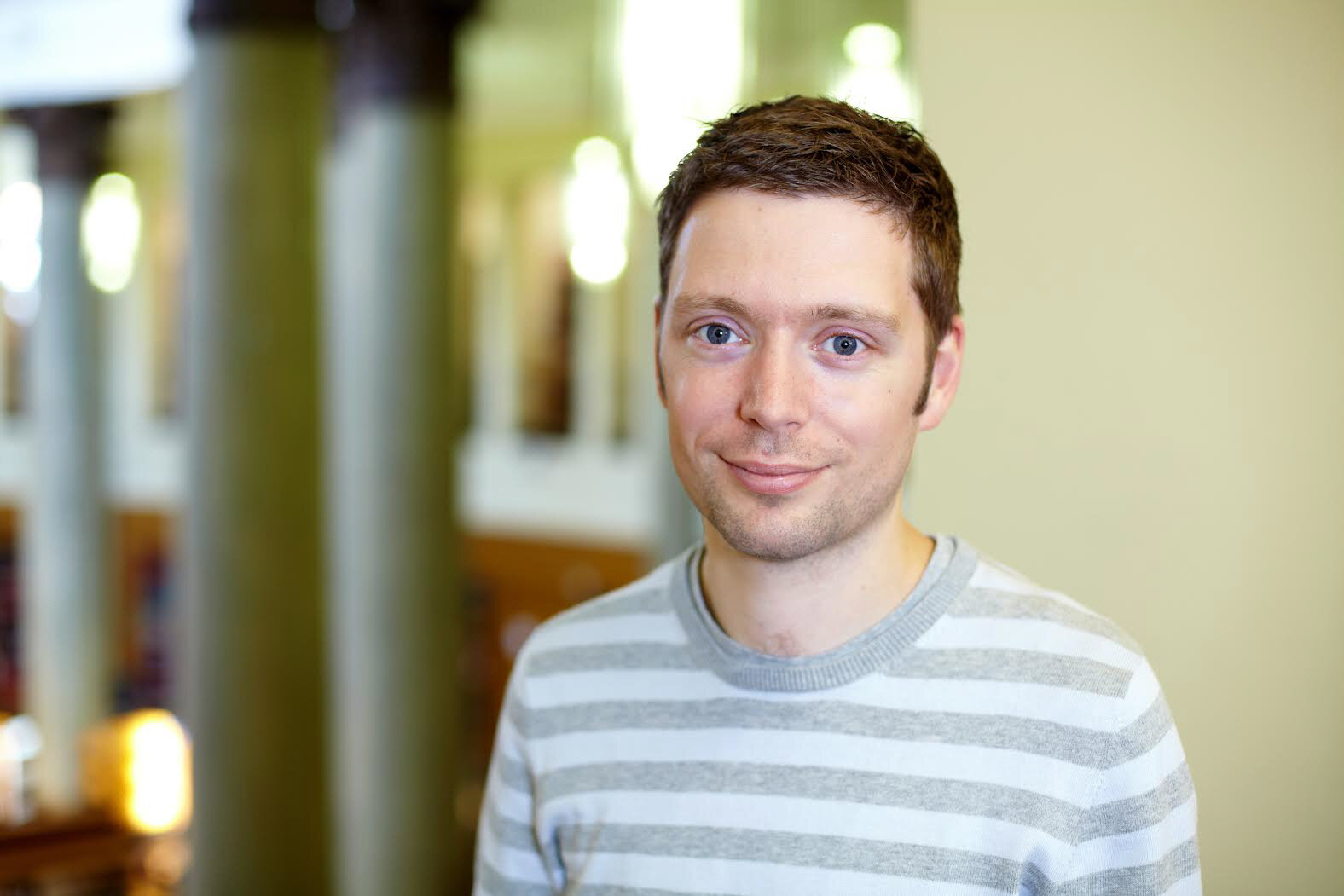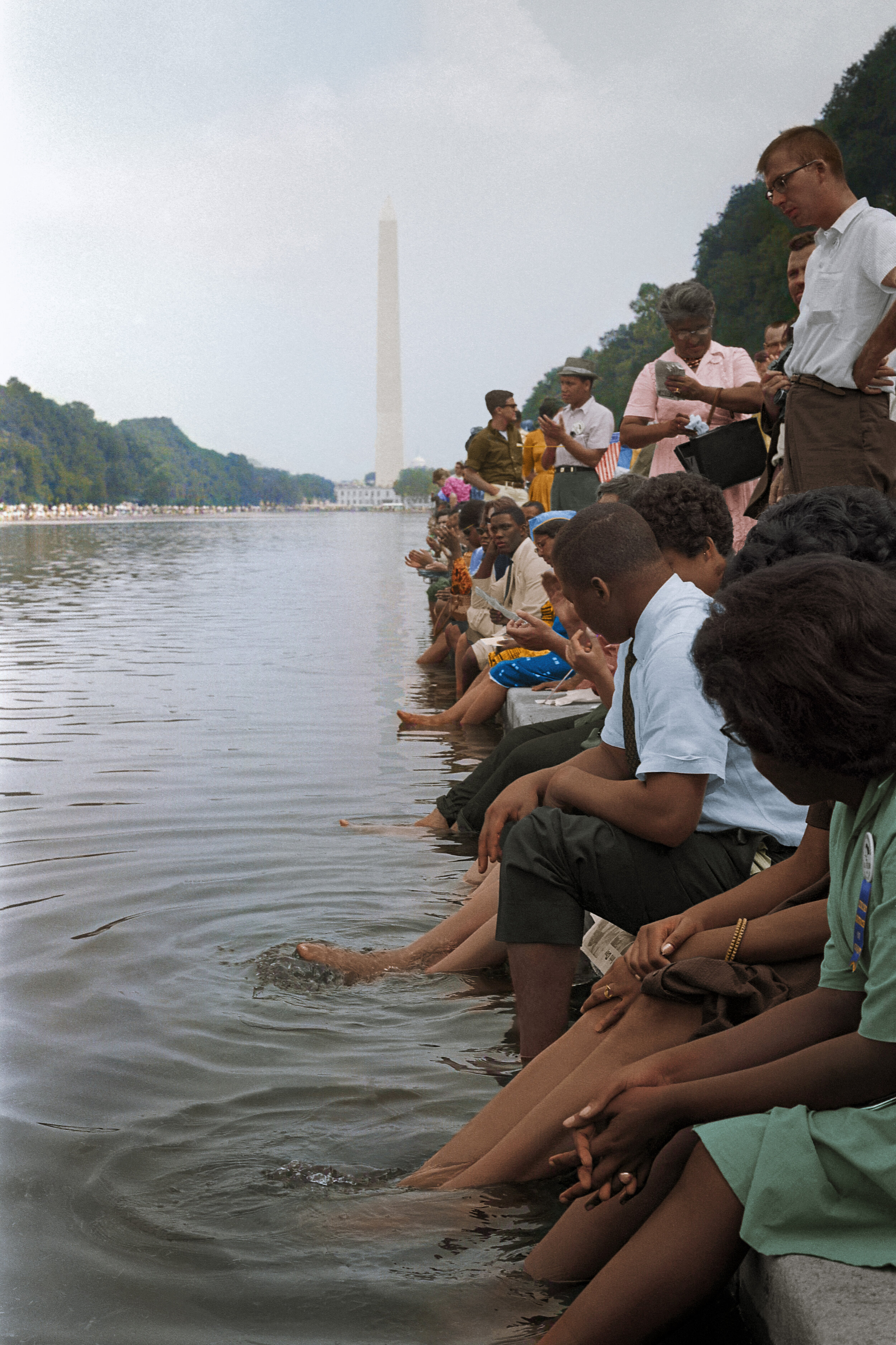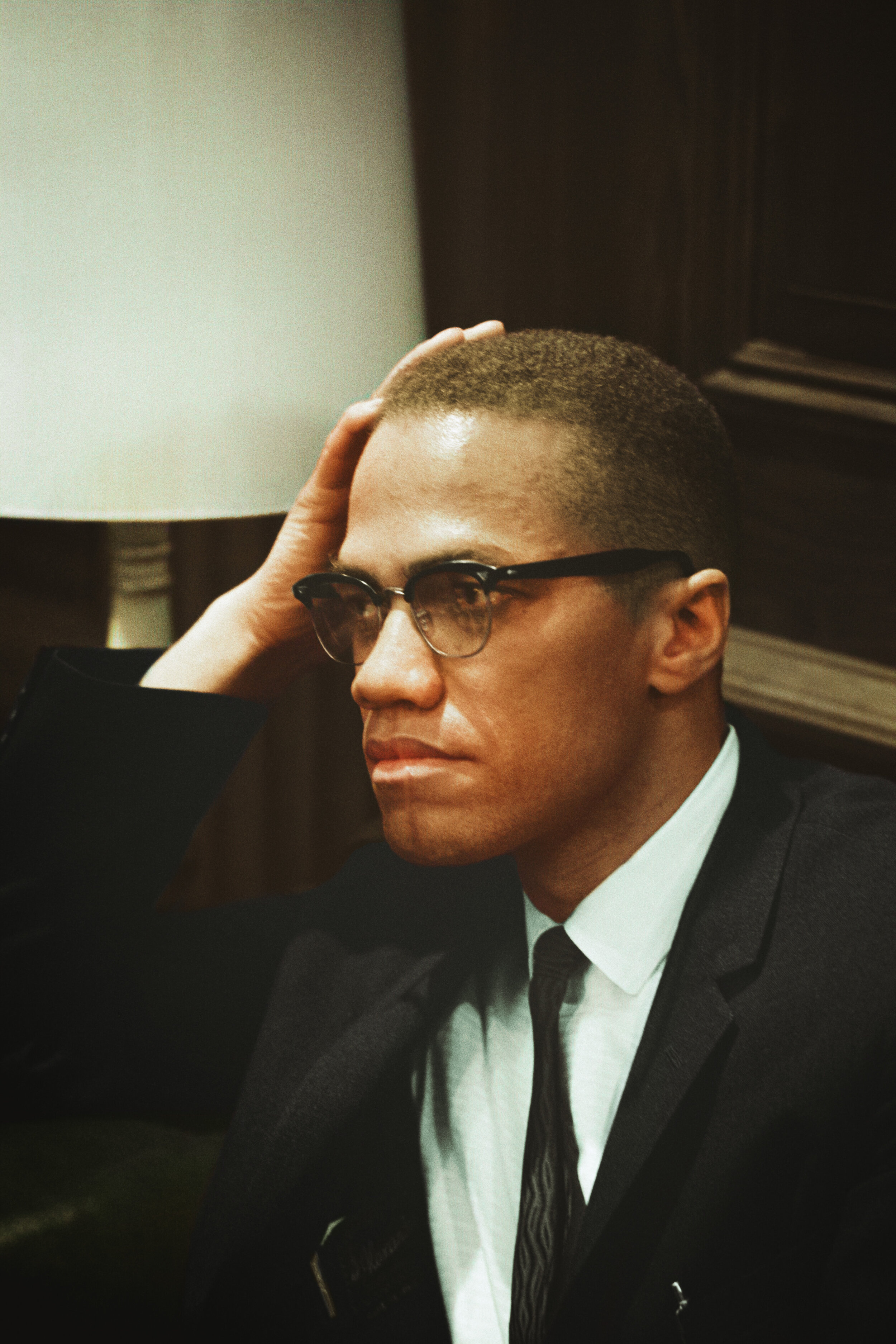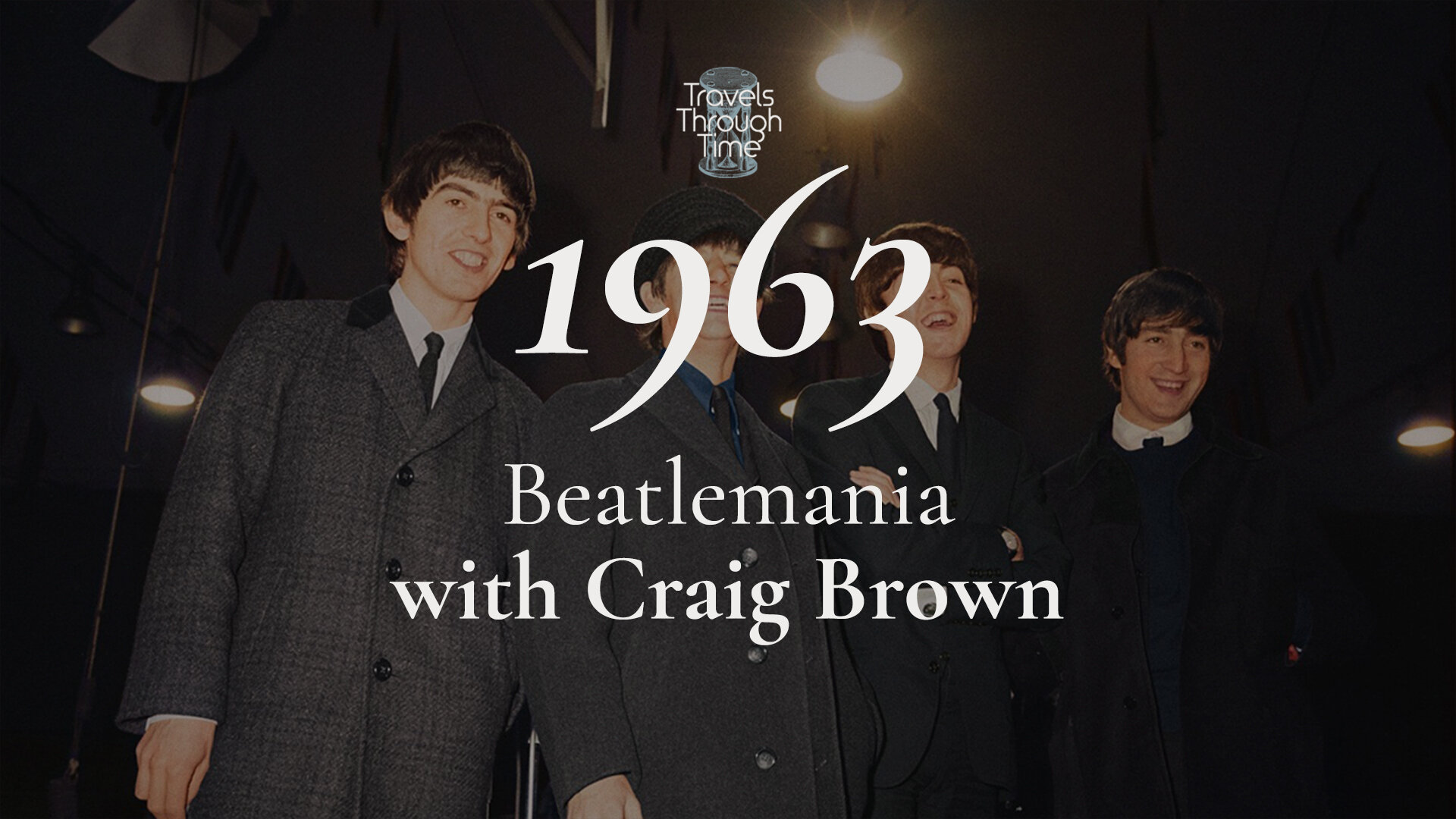Fidel Castro comes to Harlem: Simon Hall (1960)
In this politically-charged episode of Travels Through Time, Professor Simon Hall takes us on a tour of the United States in 1960. We visit the ‘Greensboro Four’ as they ignite a nation-wide series of sit-ins. We see Fidel Castro and his swashbuckling entourage at the Hotel Theresa in Harlem. And we watch as Nixon and Kennedy go head to head in the most famous presidential debate of them all.
***
As the sixties begun, the world was primed for change. In the fifteen years since the Second World War had ended, it had become increasingly clear that the old colonial order was defunct. As the old European powers retreated, Africa in particular was being seen as a Continent reborn. But no country on the planet was drawing quite as much attention as the Caribbean island of Cuba.
“The crowd was in good humour: one local observed how “that cat and his gang may have fought in those mountains ... and whipped that dictator Batista. But if they can stand the bedbugs in the Theresa, I’ll know they are real revolutionaries ”
In 1959 the revolutionaries had astonishingly come down from the sierra and ousted the sitting president, Fulgencio Batista. As Simone de Beauvoir put it, the Cuban Revolution had ‘exploded like a miracle under the blue sky.’
The revolutionary leader – now styled as the Maximum Leader – Fidel Castro was a new and transfixing presence in global politics. As soon as he had seized power he energetically set to reshaping Cuban society. One of Castro’s priorities was to dismantle the racist system of segregation that had long been in effect.
All this was unsettling to the Eisenhower administration in the USA. Racial politics was one area where the US could not claim moral supremacy over the other nations of the world. Writing in the New York Amsterdam News, James Hicks described the ‘Jim Crow South’ as the point where the US was ‘most vulnerable to foreign attack. It is our Achilles heel – our soft unprotected underbelly.’
The events of 1960 would prove Hicks’s point. On 1 February four black students - Joseph McNeil (17), Franklin McCain (19), David Richmond (18) and Ezell Blair, Jr. (18) – caused a national sensation when they sat down at the ‘whites only’ lunch-counter, and politely requested service. When they were refused, their cause became a national topic of debate and a source of popular protest.
Greater impetus was given to this nascent Civil Rights movement in September 1960 when Fidel Castro arrived in New York City for a United Nations meeting. Receiving a cool welcome in Midtown, Castro pulled a PR coup by relocating to the Hotel Theresa in Harlem. His stay in Harlem - the unofficial capital of Black America - became a sensation and his presence acted as a magnet for many of the great names of America’s liberal left.
The sense of political change was inflated by November’s presidential election. The election of 1960 was to be fought between the Democrat John F. Kennedy and the Republic ‘bruiser’ Richard Nixon. For the first time in history, the two challengers were to face off in an event that would go on to become a political staple: the televised presidential debate.
Simon Hall, Professor of Modern History at the University of Leeds, guides us through all of this rich and volatile history.
***
Click here to order Simon Hall’s book from John Sandoe’s who, we are delighted to say, are supplying books for the podcast.
Listen to the podcast here
Show notes
Scene One: 1 February 1960; the lunch counter at the F. W. Woolworth store in Greensboro, North Carolina.
Scene Two: Evening of Thursday 22 September; the Skyline Lounge, Hotel Theresa, Harlem.
Scene Three: 26 September, CBS’s McClurg Court studios, Chicago.
Memento: One of Fidel Castro’s cigars
People/Social
Presenter: Peter Moore
Guest: Simon Hall
Producers: Maria Nolan
Titles: Jon O
Follow us on Twitter: @tttpodcast_
Podcast Partner: ColorGraph
See where 1960 fits on our Timeline
Prize Draw
We have teamed up with Simon Hall’s publisher, Faber, and Jordan Lloyd at Colorgraph to make a wonderful 1960/Castro-themed prize for Travels Through Time listeners. If your name comes out of the digital hat on 14 September you will win a first edition hardback copy of Ten Days in Harlem and Jordan’s colourised image of Fidel Castro at the UN in September 1960. You can see this image just below here.
To enter, all you have to do is sign up to our newsletter. Good luck
Deadline 14/09/2020. Winners notified by email.
Images
Fidel Castro at the United Nations, Taken September 22nd, 1960, New York, United States (Library of Congress) Colourised by Jordan Lloyd, 2020 and available as a print at Colorgraph.
More about the scenes:
Scene One:
1 February 1960; the lunch counter at the F. W. Woolworth store in Greensboro, North Carolina.
Late on the afternoon of Monday, 1 February 1960, four Black students from North Carolina’s Agricultural & Technical College entered the F. W. Woolworth store, in downtown Greensboro. After purchasing a few items – toothpaste, a hairbrush, and a notebook – Joseph McNeil (17), Franklin McCain (19), David Richmond (18) and Ezell Blair, Jr. (18) – sat down at the ‘whites only’ lunch-counter, and politely requested service. They were refused. Rebuffing requests to leave, the four remained in their seats for an hour, until the store closed.
The following day, the ‘Greensboro Four’ were joined by a dozen others, and over the coming weeks, the protests mushroomed. By the end of April, some 50,000 students had taken part in protests across more than seventy southern towns and cities, with 2,000 arrested – and a new organisation, the Student Nonviolent Coordinating Committee, had been founded. The direct-action phase of the civil right movement was underway.
Scene Two:
Evening of Thursday 22 September; the Skyline Lounge, Hotel Theresa, Harlem.
In New York for the 15th General Assembly of the United Nations, Cuba’s prime minister, Fidel Castro, had stormed out of the Shelburne Hotel, in mid-town, after less than 24 hours, following a dispute with its owner. After protesting at UN headquarters, and threatening to set up a camp in the rose garden, Fidel and his delegation rocked up at the iconic Hotel Theresa, in Harlem, where Fidel would hold court with a succession of high-profile guests, including Malcolm X, Nikita Khrushchev, and Gamal Abdel Nasser.
Earlier on 22 September, after being excluded from an official dinner for Latin American leaders hosted by President Eisenhower, Fidel had treated a dozen Black employees of the hotel to a steak lunch and a round of beers. Now, that evening, Fidel was guest of honour at a gala reception, hosted by the Fair Play for Cuba Committee. The 250 or so guests included a host of left-liberal celebrities, actors, artists and intellectuals - the black freedom fighter Robert F. Williams, the black poet, playwright and activist LeRoi Jones/Amiri Baraka, the New Left intellectual and Columbia University sociologist C. Wright Mills, and the Magnum photographer Henri Cartier-Bresson. The Beat poet Allen Ginsberg was there, too – and managed to render Fidel momentarily speechless (no easy task) when, after approaching the Cuban leader, and shaking his hand, he asked when his revolutionary government was going to legalise marijuana.
The reception was an early glimpse of the politics of ‘radical chic’ that would soon become de rigueur for a new generation of Leftists across the United States and Western Europe.
Scene Three:
26 September, CBS’s McClurg Court studios, Chicago.
On the evening of Monday September 26, Vice President Richard Nixon went toe-to-toe with Senator John F. Kennedy in the first televised presidential debate in U.S. history. While radio listeners scored the contest a draw, among the 70 million watching on television Kennedy emerged as the clear winner. Nixon’s ‘defeat’ in the debate was widely attributed to his personal demeanour: whereas Kennedy directed his answers straight to the camera, Nixon glanced to the side to address the various reporters who were asking the questions, making him appear somewhat shifty. And while the suntanned Kennedy presented a picture of health, Nixon – who was recovering from a recent bout of ’flu – looked deathly pale (he was visibly sweating under the studio lights, causing the makeup that had been applied to hide his five o’clock shadow to run). Watching the debate, Chicago’s mayor, Richard Daley, quipped “my God, they’ve embalmed him before he even died.” When the broadcast was over, Nixon’s mother called her son to ask if he was ill.
Having gone into the debate trailing Nixon in the opinion polls, Kennedy now took the lead; he went on to win the White House by a margin of just 49.7% to 49.5% in the popular vote (and, according to opinion polls, more than half of all voters claimed to have been influenced by the debates when it came to casting their ballot).
Jordan Lloyd’s Unsplash, ‘March on Washington’ set of colourised photographs
Listen on YouTube
Complementary episode
Beatlemania: Craig Brown (1963)
In this wonderfully descriptive and entertaining episode of Travels Through Time the award-winning writer and satirist Craig Brown takes us on a cultural tour of 1963. We discuss the Great Train Robbery, the Beatles meteoric rise to fame and the assassination of JFK.
Apollo 11 & the Space Suits: Kassia St Clair (1969)
Millions stayed up through the night of 20/21 July 1969 to experience one of the most iconic moments of the twentieth century. They watched on their TV sets, part of a global audience of 528 million, as Neil Armstrong edged down a ladder to become the first human to set foot on the moon. It […]
Nixon vs Kennedy. First presidential debate, Sept 1960
Chronology of Fidel Castro’s trip to NYC, 1960, from Ten Days in Harlem
September 18 (Sunday): Castro arrives in New York for the opening of a new session of the UN General Assembly.
September 19: Cuban delegation leaves the Shelburne Hotel in Midtown, and relocates to the Hotel Theresa in Harlem. Late that night, Castro holds a historic meeting with Malcolm X.
September 20: Nikita Khrushchev travels to Harlem for his first face-to-face meeting with the Cuban leader – whom he praises as a “heroic man”. When asked whether he thought Castro was a Communist, Khrushchev demurs, but asserts that he is a fidelista.
September 21: Castro meets with local civil rights leader L. Joseph Overton. Meanwhile, a “pistol-firing, beer-bottle-throwing battle” between supporters and opponents of the Castro regime erupts in a restaurant 8 blocks south of Central Park – injuring several diners, and killing a young Venezuelan girl.
September 22: President Eisenhower speaks at the General Assembly (when he finishes, Castro ostentatiously refuses to join the applause). Snubbed by the American president (who excludes the Cubans from a banquet for Latin American leaders), Castro treats twelve African American employees of the Theresa to a steak lunch, and beers. That evening, the Fair Play for Cuba Committee hosts a reception in the Theresa’s ballroom; the Beat poet Allen Ginsberg, the New Left intellectual C. Wright Mills, the radical campaigning journalist I. F. Stone, the black freedom fighter Robert F. Williams, the black playwright Amiri Baraka, and the French photographer Henri Cartier-Bresson are among the 250 guests.
September 23: Khrushchev addresses the General Assembly – denouncing colonialism and western militarism, he praises “courageous Cuba” which, he claims, has become “the object of all kinds of attacks, intrigues and subversion, economic aggression and finally, poorly concealed threats of intervention.” Later, that evening, Castro arrives – 40 minutes late – for a dinner with the Soviet leader, whom he presents with gifts including Cuban cigars and a pair of maracas.
September 24: As a Cuban Flag is raised above the Theresa, pro and anti-Castro forces jostle in the streets outside (at one point, eggs are thrown). Meanwhile, the Cuban government extends official recognition to the governments of the People’s Republic of China and the Democratic People’s Republic of Korea.
September 25: Egypt’s President Nasser travels to the Theresa for a 90-minute meeting with Castro, in which they discuss the common problems of the ‘under-developed’ nations and the possibility of Cuba joining the non-aligned movement.
September 26: Castro delivers a 4½-hour speech at the U.N. General Assembly (still a record), in which he denounces U.S. racism, “imperialist financial capital” and the “colonial yoke.”
September 27: Castro takes tea with Nkrumah at the Ghanaian Mission, before returning to the Theresa for a meeting with the Indian leader, Jawaharlal Nehru. He later attends a reception, hosted by Nehru at the Carlyle Hotel, for world leaders from NATO, the Warsaw Pact, and the Middle East – part of an attempt to ease Cold War tensions.
September 28: Castro flies back to Havana on a borrowed Soviet plane (the Americans had impounded the Cuban aircraft, claiming that the airline owed money to U.S. creditors).
Click here to order Ten Days in Harlem by Simon Hall from our friends at John Sandoe’s Books.
Argues that Castro’s visit to New York for the opening session of the UN in September 1960 had immense influence on the decade that followed.














